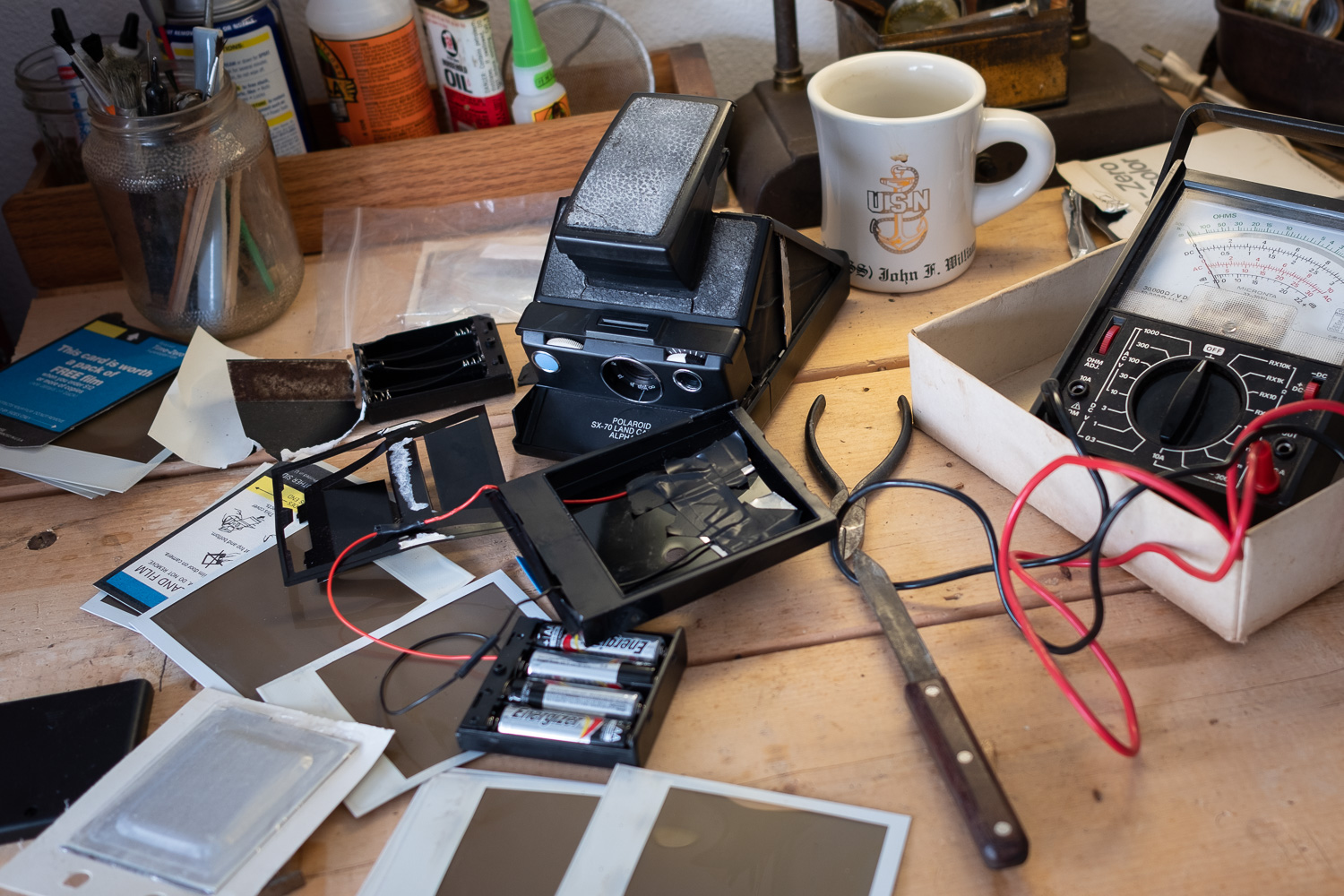Some of my earliest photographic memories are of my grandparents documenting holidays, vacations, and other events with a Polaroid camera. It was usually my grandmother who was behind the Polaroid, while my grandfather wielded the 8mm movie camera, blinding us with light as we entered their house.
In 1947 Polaroid introduced the Land Camera Model 95. This camera and subsequent models required that the photographic paper be removed manually, peeled open after 60 seconds, and then left to dry. This was often a messy process, but still it provided an instant memory. The SX-70 Land Camera, introduced in 1972, ejected it’s film automatically without chemical residue.
My grandparents Polaroid SX-70 Land Camera Alpha SE probably dates from 1976 and originally cost around $180.00, with film costing $6.90 for ten pictures. No small investment. In today’s dollars that’s $859.00 and $32.00 respectively. But the memories created by that camera, and my grandparents using it, are priceless.
Just some of the 30-year-old film packs that were stored with the camera. No surprise this film did not work.
While preparing for a move, I came across a bag containing that camera and several packs of film. I remembered taking the camera and film from my grandmothers house years before as a curiosity and to see if I could get it to work, but mostly for nostalgic reasons. Moving forced me to rid myself of many things, so if I was going to take this camera with me, it had to be for a reason, I had to see if it would work.
The first thing I tried was the obvious, take a pack of the old film and load it into the camera. It didn’t work. SX-70 Polaroid cameras get the six-volts they need to power the electronics and drive the motor from a PolaPulse cell inside the film pack, so it’s no wonder that the 30-year-old film pack had a dead battery. I ordered a new pack of Polaroid Originals 4676 Color Film from Amazon.
I used a 6v battery pack, some metal snipped from a piece of flashing, electrical tape, solder, and an empty film pack to build a Polaroid camera tester.
While doing background research on the camera I came across a few YouTube videos showing several ways to test polaroid cameras by applying external power. In order to do that, I purchased a 1.5v AA battery case holder for $5.89 and figured I had nothing to lose by trying it.
After several attempts which I show on my VLOG, I got the camera’s motorized drive to cycle. That, at least told me the camera was capable of working. Knowing this, I loaded it with that fresh pack of film and lo and behold, it worked. I was ready to take some photos.
This is the first photo taken with my grandparent’s SX-70 in over 35 years.
One thing I didn’t do prior to loading the new film pack, was clean any part of the camera. Therefore, the resulting photos have some streaks that may have been caused by dirty output rollers or possibly a small light leak. Or maybe it was me who didn’t realize you no longer need to bend or shake the photo and it is best if you shield them from light and place face down while they develop. Whatever the results though, for now I’m having some fun with this camera.
#Nofilter or post production needed to obtain the “Polaroid” look.
I love digital photography. I love the instant feedback you get after taking a picture and the ability to share that photo widely is exciting. You can even obtain that “Polaroid” look in post production. And I’m intrigued by the Fujifilm Instax Mini 90 or the Mini 9. And more than once I’ve almost ordered the Fujifilm Instax SP-3 Mobile Printer or it’s predecessor, the SP-2, to go with my Fujifilm X-PRO2. But for some reason, I didn’t or haven’t.
But, there really is no substitute for the original. No filters needed. No digital anything. There is something truly unique about shooting with a 35-year-old camera and then holding a fully developed print in your hand minutes later. Edwin H. Land knew this in 1947 and I know it today.
From my VLOG.





